Xbox One To Get TV DVR Capabilities
by Brett Howse on August 4, 2015 11:50 PM EST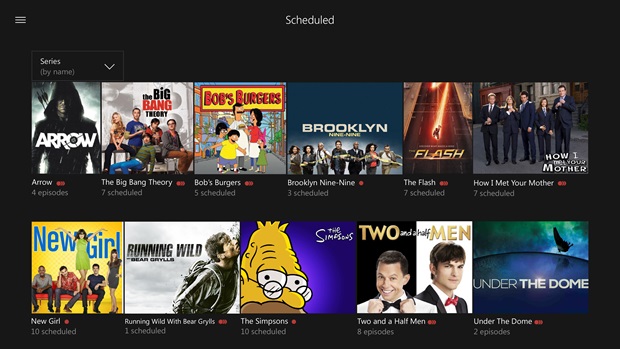
Those that never got to experience Windows Media Center as the hub of a home entertainment system likely wonder why there is such a vocal group of people who cherish it and what it brought to the living room. The ease of use of the wonderful ten foot user interface was one of those times where software architects just got it right. I built my first Windows Media Center PC about ten years ago, and it had capabilities that some cable providers still can’t match, including the ability to stream recorded content from the PC to an Xbox 360 (or a couple of other less successful Media Center Extenders) where it could be played back in another room, and you could quickly resume where you left off somewhere else in the house.
So it is understandable that there was disappointment when Windows Media Center did not get an update for Windows 8’s launch, and perhaps even some anger when it was announced that Windows Media Center would not be coming to Windows 10 at all, and any installations of Windows 10 over computers with Windows Media Center would end up in a prompt to let you know it would be removed. I think WMC was one of Microsoft’s finest examples of good software bundled with hardware support, and though we lacked the CableCARD standard in Canada, I was still able to record multiple HD stations on my now defunct WMC PC and broadcast them around the house.
I loved the software, and even the version that came with Windows 7 back in 2009 is to this day far superior to any cable box I have seen even six years later. But despite this, I eventually mothballed my WMC PC and went with the less robust Cable Co DVR setup just last year. The reason? Having a full PC running in my living room 24/7 was not without its challenges. I was of course the only support line to call if anything happened, and partially due to the lack of native HD support in Canada I decided to give it up. I don’t enjoy what I have now at all, but it works, and I, like many others, have found myself watching less cable TV anyway.
With the rise in streaming services like Netflix, Hulu, and Amazon Video, cable TV certainly is under pressure it has likely never faced before. And so I think it makes a lot of sense that Microsoft has decided to shift its focus away from WMC, which was almost certainly an extremely expensive venture, to the Xbox One.
Back in April, Microsoft announced that it was adding Over-The-Air TV tuner support to the Xbox One for North America, supplementing the existing tuner that was already available in Europe. At the time, I said that adding DVR support would put this over the top, and today we have an official announcement that this is happening. The Xbox One will offer OTA TV DVR capability next year. And the introduction certainly seems to move the Xbox One into a WMC replacement.
You will be able to stream recorded TV from the Xbox One to any Windows 10 PC, or even mobile devices running Android or iOS using the Smart Glass app. The new connected age also lets you schedule recordings through the Smart Glass app so you can set up recordings almost anywhere. In a way, it basically replicates what WMC could do by streaming to an Xbox 360, but reverses it.
Is it a true replacement for WMC? No, certainly not until it supports CableCARD, since it restricts you to just recording OTA broadcasts, but for a lot of people this is exactly what they want. The Xbox One can now be at the center for people who “cut the cord” and ditch cable, since it offers a pretty good assortment of streaming and local video playback.
Windows Media Center was great for its time, but I am glad to see that Microsoft is not abandoning it completely. Moving the capabilities to the Xbox One make a lot of sense, and should open the technology and experience up to a lot more people, since you don’t need an IT background to keep your DVR up and running any longer. They have not announced any plans for support for recording from either CableCARD yet, but still, this is a nice step for the Xbox One and should be a great solution for a lot of people.
Source: Xbox Wire


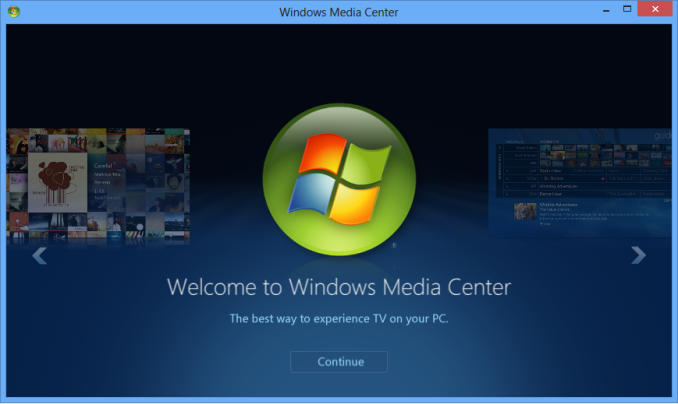
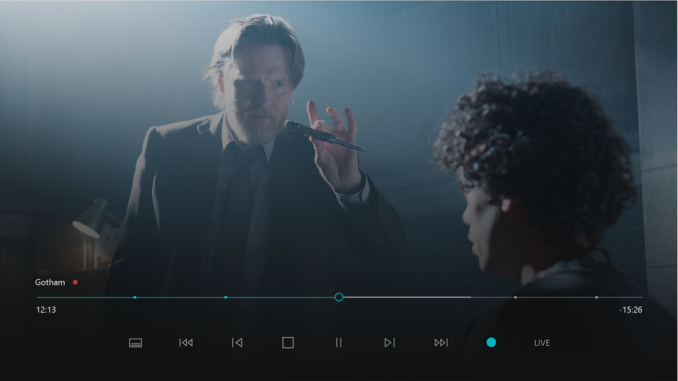
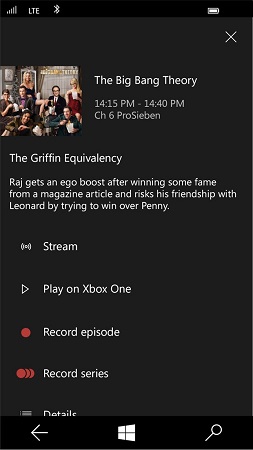
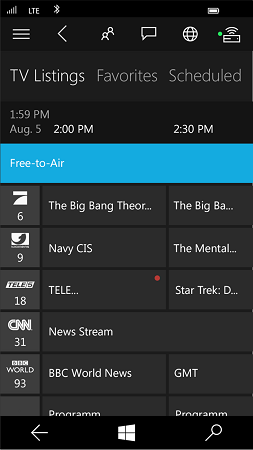
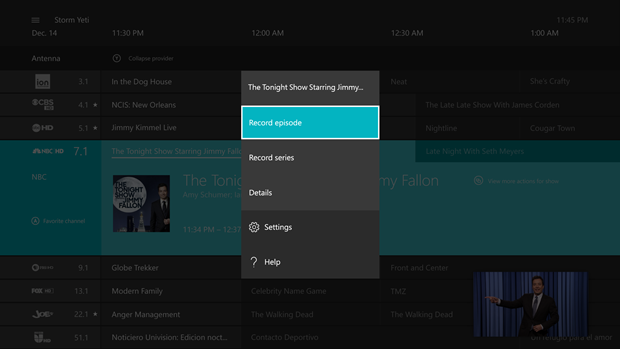








19 Comments
View All Comments
CharonPDX - Wednesday, August 5, 2015 - link
If only the Xbox One could play Xbox 360 games, it would allow me to replace *ALL* of my home theater devices at once. Yeah, eventually I'd move over to all Xbox One games, but I don't buy tons of games as it is, and many of mine are older ones that were never ported to newer (including a couple old original Xbox games.)Brett Howse - Wednesday, August 5, 2015 - link
It will be able to play some, with more coming later http://www.anandtech.com/show/9382/xbox-at-e3-new-...In fact today they said that going forward, any Games with Gold 360 game will be able to be played on an Xbox One when backwards compatibility is enabled.
ol1bit - Wednesday, August 5, 2015 - link
Bah, My Media PC is still Windows 7 (i5/650) in Phoenix, AZ and I get lots of HD Broadcasts, just had to fight with it since MS dumped Zap-It for a different provider, but it still works good!Sadly since MS dumped Media Center in 10, Netflix is abandoning it also stoping 9/15. So the world is going fractured, HBO in Chrome, Netflix in Chrome, Hulu in Chrome, all I need is Silicon Dust Tuners to work with guide and DVR mode. Sadly my Harmony Remote doesn't work as well with Browsers. Android TV kind of blows, but Nvidia's Shield is said to support OTA Tuners as well.
I went from a perfect world in 2011, to a fractured one by the end of 2015. Sigh technology advancement is great.
Wolfpup - Wednesday, August 5, 2015 - link
Wow, this is really cool they're doing this (although it's yet ANOTHER reason they need to redesign the Xbox One to use user replaceable drives!!!)I already bought the Haugpage (?) Xbox One tuner, and this could actually be useful for me as right now I've got 3 tuners between 2 (older) Tivos, and sometimes don't have enough tuners. Of course if/when a Tivo dies I'll replace it with a newer one with more tuners, but still this is nifty.
vortmax1 - Wednesday, August 5, 2015 - link
I've had an HTPC in my living room serving as the primary video content device for my small family since about 2010. Everyone who has come over and seen how it works has asked about it. I've gotten several requests to help other "cord cutters" set up WMC on an HTPC. As others have said, WMC has been really slick and very easy to use. So, I wasn't pleased to see it dropped in Windows 10. I've started to play around with MediaPortal and Kodi/XBMC (I use Plex a lot, but the lack of live TV support means that it's used only for streaming to other devices), but I don't find either to be as easy to use as WMC (though MediaPortal is pretty close to WMC, at least my wife says so). I'm not a gamer, so I'm not keen to drop a bunch of $ on an Xbox One. That said, for those cord cutters who don't want to babysit a PC and have an interest in gaming, I'm sure the One solution will work well.FwFred - Wednesday, August 5, 2015 - link
Attention Microsoft, I will ditch my Win7 media center and buy an Xbox One if your support Cablecard with HDHomerun Prime.hurrakan - Thursday, August 6, 2015 - link
I used WMC with Windows 7 for ages but I hated it. It saved live TV recordings using the terrible proprietary .WTV format that is virtually impossible to edit (e.g. to remove commercials).I hung on to WMC for years because I didn't know any other way to watch/record live TV. Now I use NextPVR, which is much better.
ajlueke - Thursday, August 6, 2015 - link
You could edit the files just fine. I never had an issue with it. The only files I couldn't access were those marked as copy once flags, but those were typically just the premium channels.ajlueke - Thursday, August 6, 2015 - link
"I think WMC was one of Microsoft’s finest examples of good software bundled with hardware support"I almost couldn't believe that I read that. I think hardware support was one of the biggest reasons WMC never really took off with users. Windows XP media center edition launched in 2002, and was fully baked into Windows Vista at launch in 2007. In the area I live, OTA television is pretty minimal, so to get Windows Media Center to do what it was billed to do I needed a cablecard tuner. For those first 7 years until Windows 7, what was available for hardware? Ah yes, the ATI Cablecard tuner, that supported one continuous stream, for $400. If you wanted to watch a show and record something else, or stream live TV to extenders you needed additional tuners at $400 a pop. Not to mention the hardware options for extenders were atrocious. In the end the Xbox 360 was the most viable option when it debuted in 2005. But at a cost of over $300 for each loud power hungry extender?
The buy in was simply ridiculous, and OEM vendors quickly abandoned the concept. The cost of a PC, multiple tuners and extenders was outrageous but necessary make the thing work as it was intended. By the time Xbox 360s were more affordable and less power hungry and the Ceton quad tuner card had launched the software had essentially already been abandoned.
This was evidenced by the fact that Microsoft never bothered to update Media center never to play Blu-ray media or most file extensions that had become popular such as .mkv. Beyond Netflix, no other streaming media plugins were ever added. So now that the TV end was finally solved in 2009, new popular media formats were unsupported. Making a whole system a wash. Once the hardware support finally arrived, the software support was gone. Media center could be beefed up with software like My Movies to transcode and Cyberlink PowerDVD to augment playback, but that was hardly user friendly.
One to the Xbox portion of your article. Replacing Media Center with a single low cost system that most users already have in the living room does seem to be a good idea, but it is hardly novel. The software now known as Kodi was originally designed as Xbox Media Center (XBMC). The original DirectX Box, was a locked down x86 based system that could be converted to a media center by installing this third party software. Microsoft has decided to take the once again x86 based Xbox One and turn it into a media center that also plays games. The Xbox one has fixed many of WMCs problems. Blu-ray playback is supported, along with most video file extensions via DLNA. Also, most streaming services have an app readily available. However, I actually feel that software like Kodi and Mediaportal do a better job of replacing Media Center than the Xbox One currently. Both also support most local media much like the Xbox One. On Mediaportal I have a single server PC and then smaller client PCs on other TV that can stream images, music and most video file extensions along with the Ceton Cablecard tuner (Sadly only copy freely content). But, I can watch TV on the server PC and watch and record different programs on the client PCs.
Xbox One with smartglass also requires client PCs to stream via the app. But the TV tuner supports only OTA, and is just one tuner per device. So I can watch TV on the primary device, or I can stream to a client device. What if I want to do both, or also record something? Hello again ATI cable card tuner and 2005, how I missed you. So Microsoft's solution and hardware support for TV on their new device designed to replace WMC is exactly the same as WMC 10 years ago but with fewer channels. Good Gravy! Sure, the TV stuff is less of an issue now with the rise of DVD/Bluray storage as .mkv and streaming services, but still! At least with Mediaportal I can stream TV around the house from one central location and watch all my local content. Granted, streaming services aren't baked it, but on a PC the browser is never far away.